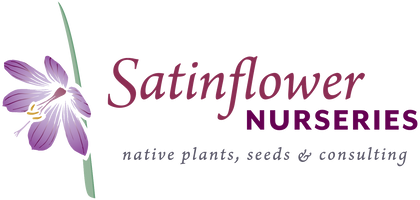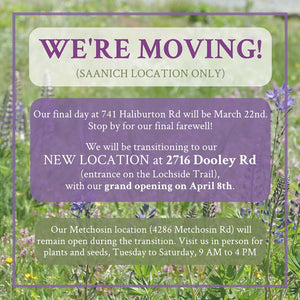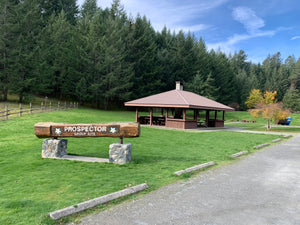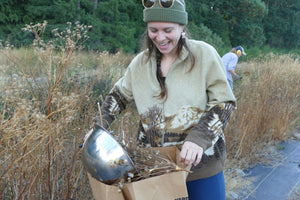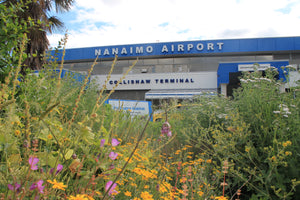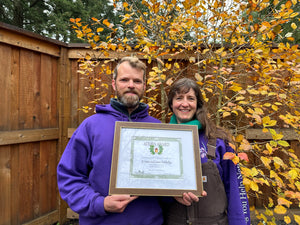Weekly with Daly: Winter Backyard Birds

The Weekly with Daly is a regular column about the musings of the nursery written by our in-house wildlife observer and passionate conservationist, Julia Daly.
All photographs by the amazing Glenn Bartley Nature Photography - Bird Photos and Workshops
February 25, 2023
For those new to bird watching, winter is a great time to get started because there is a much smaller (less overwhelming!) subset of birds available to see at this time of year. Generally speaking, birds seen on southern Vancouver Island in the winter are here as year-round residents or visiting from breeding grounds at higher elevations or further north.
I love a good bird mystery to solve. For example, when someone asks me, “What is that bird I’m always seeing in my yard with the red eyes and white spots on its wings that makes a funny, high-pitched ‘schreee!’ sound and is always rifling through the leaves on the ground?” Instead of immediately trying to provide an answer, I might ask, “What do you think it’s doing scratching in the leaves?” The bird in question is likely a spotted towhee (Pipilo maculatus) (feature photo) foraging for insects and other invertebrates that live in the leaf ‘litter.’
Native plants provide so much more for birds than sites to build nests and raise their young. Native plants supply food: insects–many thousands of species of insects that have each evolved to eat these plants’ living or dead foliage or other plant materials (or to eat other insects that eat these plants). Despite what many people think, possibly because of what we observe at bird feeders, seeds don’t sustain resident and migratory birds for most of the year–insects do, even in the winter. And several studies have shown that native plants support far more species of insects than non-native plants (Tallamy 2021).
“...the overwhelming majority of the insects that become bird food will not be in our yards unless we have the native plant species on which those insects depend for growth and reproduction.” – Douglas Tallamy, The Nature of Oaks (2021)
While seeds, berries, and nectar are an important seasonal food source for many songbirds like jays (acorns) and thrushes (berries), insects and spiders, rich in fats and proteins, are what these birds most greatly need. Most songbirds do not rear their young on seeds at all. So if you want to see and support a greater diversity of native birds at home, the solution is simple: provide more diverse native vegetation.
Here is a list of some of the most common songbirds found in suburban habitats over the winter on Southeastern Vancouver Island. Happy winter birding!
WINTER SONGBIRDS
- American robin (Turdus migratorius)
- Dark-eyed junco (Junco hyemalis)
- Chestnut-backed chickadee (Poecile rufescens)
- Bushtit (Psaltripparus minimus)
- Red-breasted nuthatch (Sitta canadensis)
- Brown creeper (Certhia americana)
- Downy woodpecker (Picoides pubescens)
- Red-breasted sapsucker (Sphyrapicus ruber)
- Spotted towhee (Pipilo maculatus)
- Bewick’s wren (Thryomanes bewickii)
- Golden-crowned sparrow (Zonotrichia articapilla)
- White-crowned-sparrow (Zonotrichia leucophrys)
- Song sparrow (Melospiza melodia)
- Fox Sparrow (Passerella iliaca)
- House finch (Carpodacus mexicanus)
- Northern flicker (Colaptes auratus)
- Anna’s hummingbird (Calypte anna)
- Ruby and golden-crowned kinglets (Regulus calendula and R. satrapa)
- Varied thrush (Ixoreus naevius)
- Northwestern crow (Corvus caurinus)
- *House sparrow (Passer domesticus)
- *European starling (Sturnus vulgaris)
*Invasive species

Figure 1 (left). Brown Creeper (Certhia americana) forages for insects within the bark of a Douglas-fir tree. Brown creepers hitch up the trunks of trees, starting at the base, probing the crevices for insects as it climbs up, then fly to the next tree and start again. They use their stiff tails as a brace as they climb.
Figure 2. (right). Downy woodpecker (Picoides pubescens) probing insects from decaying limb.

Figure 3. Bushtits (Psaltripparus minimus) travel in flocks often mixed with other small songbirds like chickadees and kinglets, moving briskly between shrubs to trees, gleaning tiny insects from the foliage. Interestingly, males and females have different coloured eyes. Male left, female right.

Figure 4. Anna’s hummingbirds are one of BC’s earliest nesting birds, building nests made from spider webs, plant down, moss and lichen in February. Even hummingbirds must supplement their diet with small insects and spiders, often caught acrobatically in the air.
References:
Photographs courtesy of Glenn Bartley.
--> We have almost 250 people registered in our Native Seeds & Growing Project! Some will be joining us for an upcoming field trip with Glenn Bartley at Elk-Beaver lake on Saturday, March 4th.
Books:
Tallamy, Douglas W. 2021. The Nature of Oaks, the Rich Ecology of Our Most Essential Native Trees. Timber Press.
Cannings, Richard et al. 2005. Birds of Southwest British Columbia. Heritage HousePublishing Company Ltd.
Electronic Reference:
BC Breeding Bird Atlas. Anna’s Hummingbird, Calypte anna. 2023. Retrieved February 25, 2023, from https://www.birdatlas.bc.ca/accounts/speciesaccount.jsp?lang=en&sp=anhu.
- Tags: birds Weekly with Daly
- Satinflower Nurseries
